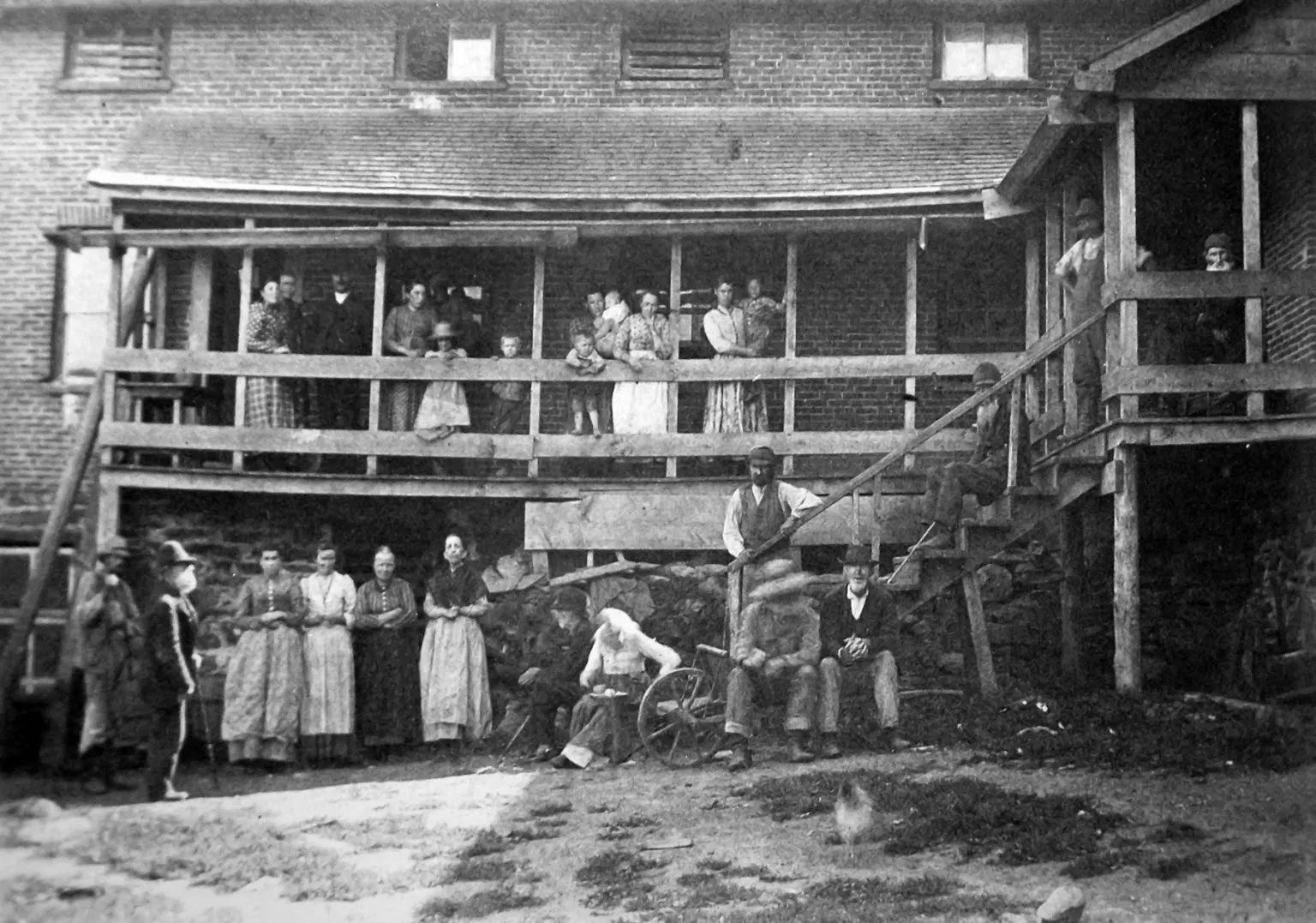“There is, however, altogether too large a number [of poor farms] where the chief concern seems to be, ‘How can we get along with the least expense, until through the natural law, we can be relieved of the burden.’”
– 1918 investigation of poor farms
While Vermont experienced economic booms and was a center to invention, many also struggled in the wake of the post-Revolutionary War economic crisis, successive economic downturns, and the changing agricultural industry. Until 1838, debtors could be imprisoned; a constitutional clause allowing indentured servitude to pay off debts remained in place until November 2022.
In 1797, the Vermont state legislature mandated that towns take care of citizens in need—regardless of their financial ability to do so. Aiming to save money and deter residents from seeking help, towns turned to policies such as the poor farm, selling the poor at auction, and warning out. These policies penalized families in need, hindering their ability to recover while hiding the extent of socioeconomic and health issues facing the state—until the state began to adopt mass institutionalization as the primary form of public welfare. By the 1900s, many state officials understood that town aid had been a deeply harmful failure.
Public welfare in the 1800s
The poor farm
The poor farm was a form of almshouse common to New England. These were not the homeless shelters of today: Farms housed the poor, infirm, young, and elderly while the mentally ill were often left in cages to rot. Towns could forcibly commit the “disorderly” and “idle.” Most were located in remote areas to limit costs and discourage the poor from seeking aid. Overseers put inhabitants to work and had to give permission for anyone to leave; it was common to find individuals or families who spent their whole lives on the farm.
The last poor farm in Sheldon closed in 1968. Today, you may still see road names that allude to former poor farms.
Policies
Selling the poor at auction
To reduce their financial commitments, towns turned to “hiring out,” which was the auctioning off of the poor into indentured servitude to the lowest bidder. The winning bidder would receive town payments. This policy often separated families and, as it incentivized low standards of care, widespread abuse and misery.
Warning out
As towns legally only had to take care of their residents, many turned to driving out people deemed non-residents before they could claim aid. This practice resulted in numerous lawsuits between municipalities as well as outlandish schemes such as forced marriages.
